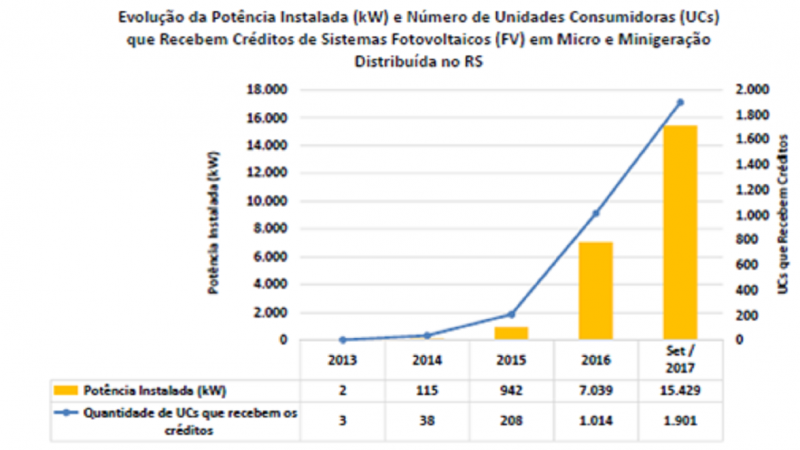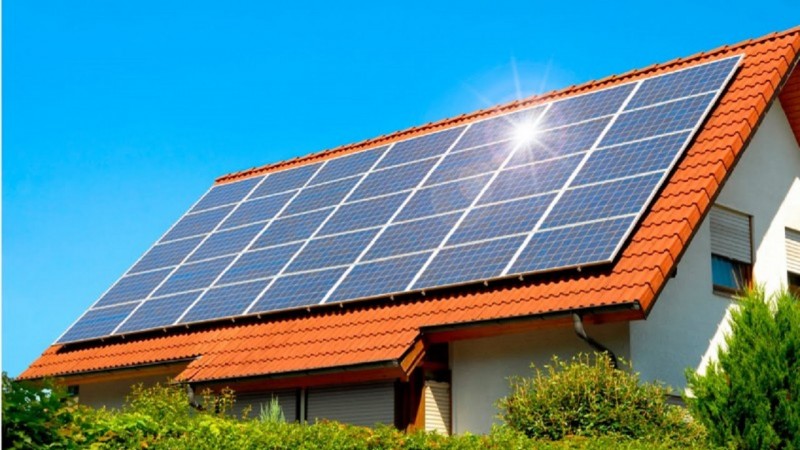Photovoltaics
Brazil is one of the countries with the greatest potential for photovoltaic energy generation. Most of its territory is located in the intertropical region, allowing the rates achieved to be higher than those existing in most other countries. The average annual irradiation in Brazil varies between 1,200 and 2,400kWh/m²/year, values significantly higher than those of most European countries, whose statistics indicate intervals between 900 and 1,250kWh/m²/year in Germany, between 900 and 1,650kWh /m²/year in France, and between 1,200 and 1,850kWh/m²/year in Spain.
The use of solar power to generate electricity in Brazil is just beginning, with significant investment expected. By 2030, it is projected that 2.7 million consumer units will join and investments that could reach R$ 100 billion. Brazil established public policies to encourage the development of solar energy by providing financing, encouraging the production chain, holding auctions for the purchase of energy from this source and encouraging self-production of energy, through the modality called Distributed Generation.
Distributed Generation allows consumer units to produce energy and make it available on the local distribution network, through an electrical energy compensation system. At the end of 2015, there was a record of 1,675 consumer units generating 0.0134 GW under the distributed generation modality, two years later, these numbers jumped to 16,138 and 0.178 GW, respectively (Aneel). The Energy Development Plan for 2026 predicts that Distributed Generation will meet 0.6% of the national demand for electricity (EPE).
With regard to centralized energy generation, two auctions were held that will enable the generation of 3.2 GW by 2018.
Rio Grande do Sul is part of this scenario with the constitution of public policies for the development of the photovoltaic source and as one of the States with the best conditions for the constitution of its productive chain. The State, due to its diversified industrial park and outstanding universities, is looking for partners to assemble solar panels and provide services for distributed generation.
 RS has consolidated competence in the metalworking, fine mechanics, electronics and automation sectors. In the largest universities in the State, there are research and reference centers in the development of technologies and professional training for photovoltaic energy. Emphasis on PUCRS and its Solar Energy Technology Center at the Faculty of Physics and the Renewable Energy Demonstration Center, which develops extension courses for professional training in the area.
RS has consolidated competence in the metalworking, fine mechanics, electronics and automation sectors. In the largest universities in the State, there are research and reference centers in the development of technologies and professional training for photovoltaic energy. Emphasis on PUCRS and its Solar Energy Technology Center at the Faculty of Physics and the Renewable Energy Demonstration Center, which develops extension courses for professional training in the area.
An interesting project by Wing 3 of the Brazilian Air Force (FAB), established in the city of Canoas, has become a model for future initiatives. Wing 3 will assign an area of 20 hectares for 25 years for the construction of a photovoltaic plant, in which part of the energy will be used by the Air Base itself and the rest can be sold on the free market by the company managing the enterprise. Based on this project, other air bases in the State, such as Santa Maria, are studying a similar model.
In the self-production system, the Guatambu winery stands out, the first in Latin America supplied entirely by photovoltaic energy. The electrical energy needed to produce and process the grapes is produced by 600 panels installed in the winery, located in Dom Pedrito, on the border of Brazil and Uruguay.
It should be noted that RS is one of the States that has been responding more quickly to policies to encourage distributed generation and, currently, it is the 2nd State that most adhered to this generation model, with 12.3% of the installed capacity in Brazil. The State also has an expanding network of companies specialized in the development, approval, installation and maintenance of photovoltaic projects, which total 181 establishments distributed throughout its regions.
In this sense, the State Government develops the Solarimetric Atlas, aiming to subsidize investment decisions and the elaboration of public policies for photovoltaic energy and provides tax incentives:
- ICMS exemption for consumer units that adhere to distributed generation
- Exemption from ICMS on operations with various equipment and components for harnessing solar and wind energy
Sector Opportunities
 The State is one of the largest consumer markets for the development of distributed generation, with 4.5 million consumer units divided between residences, industries and commerce, representing a total consumption of 29.43 GWh.
The State is one of the largest consumer markets for the development of distributed generation, with 4.5 million consumer units divided between residences, industries and commerce, representing a total consumption of 29.43 GWh.- Companies interested in producing components for photovoltaic systems, such as modules and inverters, have the support of the State Government of Rio Grande do Sul.
Business partnership opportunities
Check here the business possibilities in the sector.